Elizabeth "Lee" Miller took thousands of photos during World War II, but she's perhaps best known for posing nude in Adolf Hitler's bathtub the day he died by suicide.
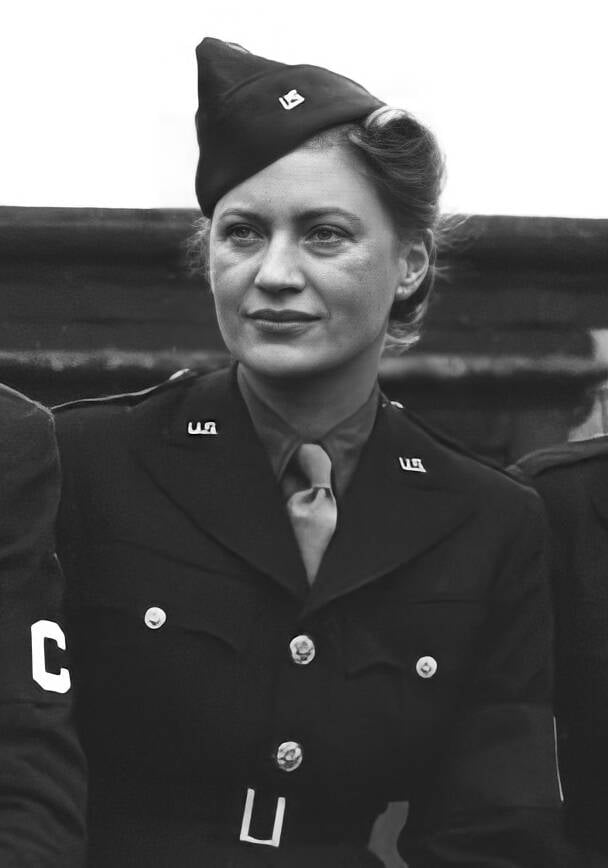
U.S. ArmyLee Miller as a war correspondent during World War II.
One of the most iconic images from World War II came not from the battlefield but from Adolf Hitler’s bathtub. In it, an American photographer named Lee Miller is seen casually soaking in Hitler’s tub, her muddy combat boots on his bath mat. The image is defiant, bold, and sensual, but it only captures a small part of Miller’s electric life and career.
After stints as a model, a Surrealist artist, and a fashion photographer, Miller started taking photos of World War II. She was present during several pivotal moments during the war, including the Blitz, the liberation of Paris, and the arrival of Allied forces at Buchenwald and Dachau.
Her photos of the concentration camps are both sensitive and shocking, including images of dead SS guards and pictures of emaciated prisoners.
But after the war ended, Lee Miller was more or less forgotten. In fact, her photos spent decades in the attic of her home — until her son stumbled upon her stunning archives. This is her story.
From The Cover Of ‘Vogue’ To The Front Lines Of World War II
Born on April 23, 1907, in Poughkeepsie, New York, Elizabeth “Lee” Miller had a difficult childhood. At the age of seven, she was raped during a trip to Brooklyn and contracted gonorrhea. In the aftermath, her father, an amateur photographer, started taking nude photographs of her. Miller’s feelings about the images are unknown, but she continued to model as an adult.
In 1927, Miller had a chance encounter with the publisher Condé Nast, which launched her modeling career. She posed for a Vogue cover that year, though her appearance in a Kotex ad shortly thereafter — then considered taboo — made it difficult for Miller to book further work.
Instead, she began to hone her skills as a photographer. Miller went to Europe to apprentice with artist Man Ray, where she also crossed paths with Pablo Picasso and Salvador Dalí. Miller became Man’s lover and muse, and she appeared in famous works of his, such as Indestructible Object.
After leaving Man Ray, Miller was briefly married to an Egyptian businessman named Aziz Eloui Bey. But by 1939, she had made her way to London with a new boyfriend, the artist Roland Penrose. There, Lee Miller would have a front-row seat to the escalation of World War II.
Lee Miller During World War II: From Normandy To Saint-Malo To Paris
On Sept. 1, 1939, World War II began with the German invasion of Poland. Though Lee Miller was advised by the U.S. government to return home, she decided to stay in Europe. She applied to work as a photographer at Vogue, and though the magazine initially declined her application, Miller was eventually hired because so many young men were being sent to the front.
After initially languishing as a fashion photographer in the studio, Miller started taking photos of wartime London. She collaborated with others, including the broadcaster Edward R. Murrow, to put together a photo book about the bombing of London known as the Blitz. Then, at the end of 1942, Lee Miller became a U.S. Army war correspondent with Condé Nast credentials.
Partnering with photojournalist David E. Scherman, Miller would go on to take some of the most iconic photographs of World War II. Many of her early pieces for Vogue were about women during the war, including the all-female British Army artillery known as the Auxiliary Territorial Service, U.S. Army nurses, and women serving in the Women’s Royal Naval Service.
In 1944, Miller’s work took her from London to mainland Europe. Though women correspondents had very limited roles — they were not permitted to photograph combat, for example — Miller pushed the boundaries of what was possible. Assigned a short piece on U.S. Army nurses working in Normandy in the aftermath of the D-Day invasion, Miller penned a multi-page article on what she had seen accompanied by 14 photographs.
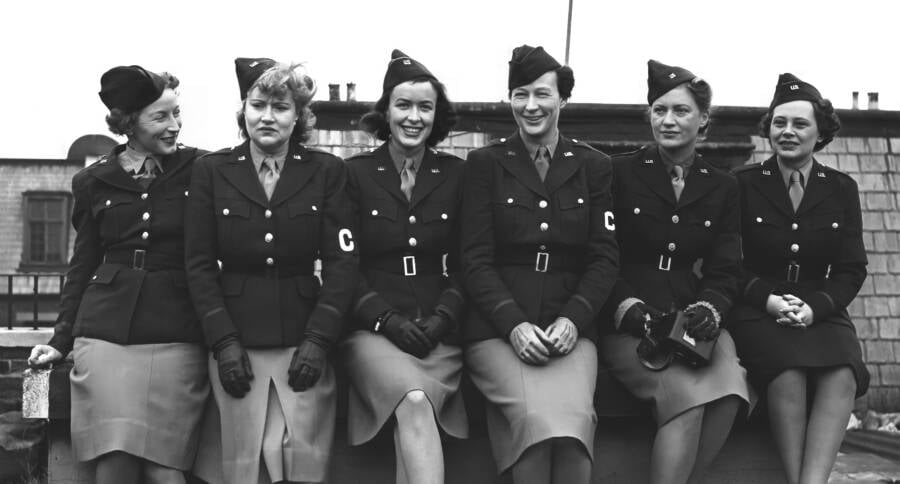
U.S. ArmyLee Miller (second from the right) with other female correspondents during World War II. Their movement was highly restricted, but Miller found herself in the thick of the action anyway.
Miller also found herself in the thick of the action in August 1944 when she traveled to the small coastal town of Saint-Malo, France. She had been assigned to Saint-Malo because the city had reportedly been liberated — but this intel was erroneous. Miller found herself as the only photojournalist in Saint-Malo, and she went to work covering the conflict.
“Machine gun fire belched from the end pillbox — the men fell flat — stumbling and crawling into the shelter of shell holes — some crept on, others sweeping back to the left of the guns’ angle, one man reaching the top,” Miller wrote of one attack she witnessed in Saint-Malo. “There was silence — poised — desperate. I could hear yells from slopes — orders — directions with nightmare faintness. There was a great black explosion where the most forward men had been a minute before.”
Shortly thereafter, Miller was sent to Paris to cover the liberation of the city from Nazi forces, a battle which took place between Aug. 19, 1944 and Aug 25, 1944. Describing the strange mix of joy, the ongoing firefights, and the scars of wartime destruction, Miller remarked: “Paris had gone mad.”
But Miller was only just beginning to experience the grim and gruesome insanity of the war. Next, she accompanied the U.S. Army as it moved east.
Photographing Concentration Camps — And Adolf Hitler’s Bathroom
On April 17, 1945, Lee Miller hitched a ride to Buchenwald after hearing that the concentration camp had been liberated (the 6th Armored Division had arrived at the camp on April 11). Though many prisoners had been sent on death marches, and though soldiers had buried the bodies of the dead that remained, Miller came across a horrifying scene. More than 50,000 people had died at the camp, and the sense of death and despair was still pungent.
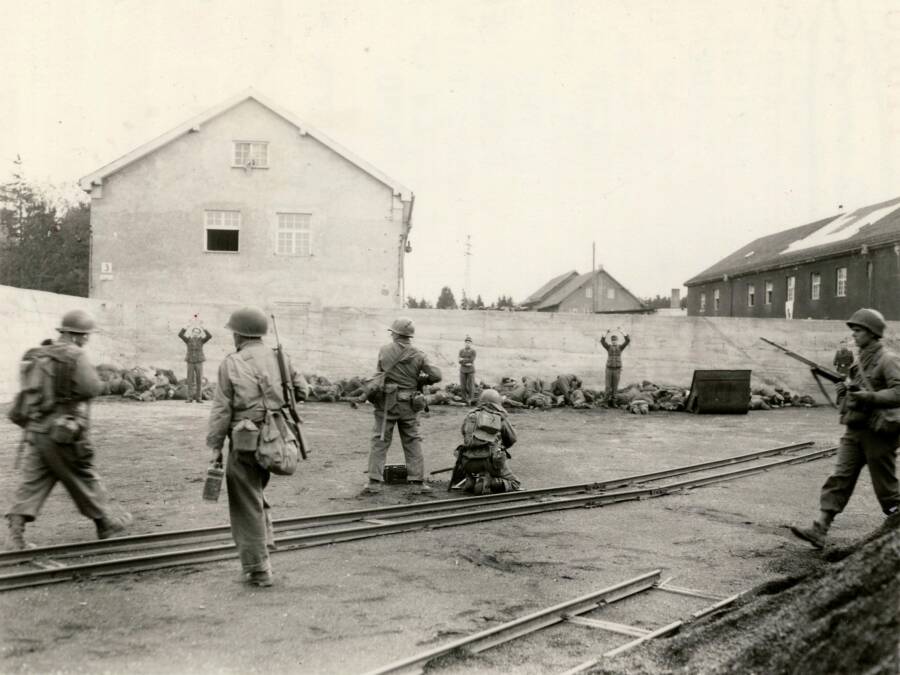
U.S. Holocaust Memorial MuseumThe execution of SS Guards at Dachau during the liberation of the concentration camp.
“The six hundred bodies stacked in the courtyard of the crematorium because they had run out of coal the last five days had been carted away until only a hundred were left; and the splotches of death had been washed from the wooden potato masher because the place had to be disinfected; and the bodies on the whipping stalls were dummies instead of almost dead men who could feel but not react,” Miller wrote for Vogue.
She and her photography partner, Scherman, were also some of the first war correspondents to witness the atrocities of the Dachau concentration camp. They arrived on April 30, 1945, and Miller documented the horror of the starving prisoners and the bodies of SS guards.
“I IMPLORE YOU TO BELIEVE THIS IS TRUE!” Miller wrote in a telegram to Audrey Withers, the editor of Vogue, alongside some of the images she’d taken. Miller added: “I hope Vogue will feel that it can publish these pictures.”
In June 1945, the magazine did, alongside the headline: “Believe It.”
However, Miller is probably best known for a photo in which she was not the photographer but the subject. After documenting Dachau, she and Scherman were assigned to lodgings at 16 Prinzregentenplatz in Munich, which happened to include Adolf Hitler’s former private apartment.
Miller and Scherman both posed nude in Adolf Hitler’s elaborate bathtub, their muddy combat boots left on Hitler’s immaculate bath mat. Later that day, they found out that Hitler had died by suicide alongside his wife Eva Braun — a sure sign that the war was truly and finally ending.
How Lee Miller’s Photos Were Lost — And Rediscovered In An Attic
Though World War II officially ended on Sept. 2, 1945, Lee Miller was not ready to return to peacetime and domestic life. She spent several years photographing postwar Europe, including the January 1946 firing-squad execution of the former Hungarian prime minister, László Bárdossy, who had collaborated with the Nazis.
Eventually, Miller returned to England with Roland Penrose, with whom she’d have a son, Antony Penrose. But her postwar life could be a struggle. She grappled with depression and alcoholism, developed a contentious relationship with her son, and was uninspired by the assignments Vogue sent over. She even minimized her own role as a wartime photographer. Antony told The Guardian in 2016 that she claimed she hadn’t done anything worthwhile during the war, saying: “Oh, I didn’t do much, it wasn’t of any importance and it’s all been destroyed since.”
When Lee Miller died on July 21, 1977, it seemed that the truth about her wartime experiences would die with her. But all that changed when Antony’s wife made a chance discovery in the attic of the family’s East Sussex home.
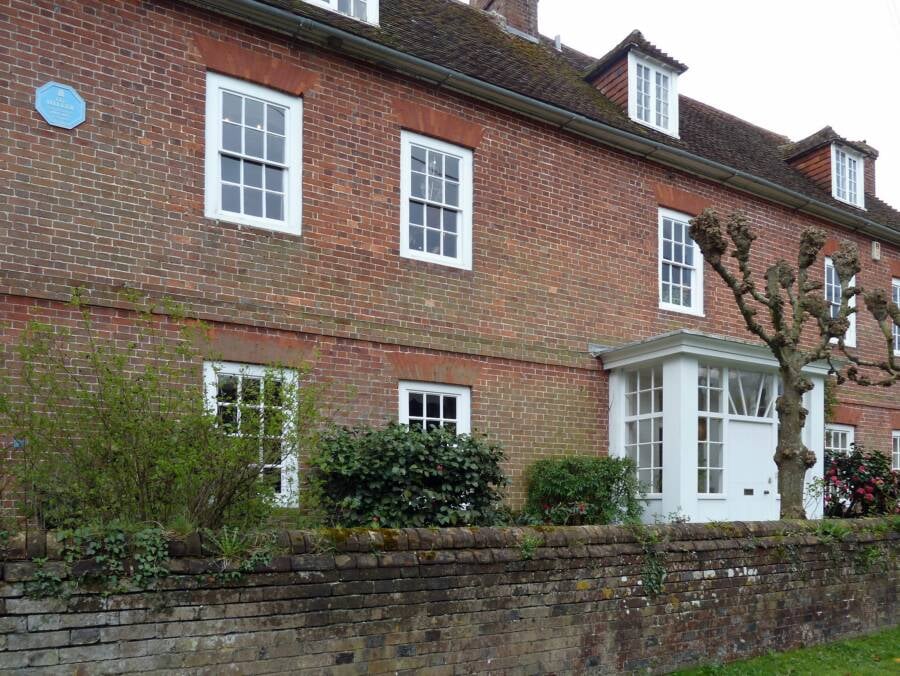
Simon Harriyott/Wikimedia CommonsLee Miller’s former home has been converted into a museum, Farleys House and Gallery, which exhibits her work as well as that of her husband.
While searching for Antony’s baby photos to compare to their own newborn, she stumbled upon the jumbled up pages of a manuscript describing a fierce World War II battle.
“[T]here was no byline,” Antony recalled to All That’s Interesting in an email. “I thought it was by some experienced LIFE magazine reporter. My father confirmed it was by my mother Lee Miller. He produced the copy of Vogue where her story was featured as The Siege of St. Malo.”
Antony was “astonished.” But there were more incredible discoveries to come. Next, he and his wife found Miller’s 60,000 negatives and prints, a sprawling and impressive body of work that Miller had kept to herself.
“We dragged everything out of the attic and took over a downstairs room. The scene in Lee [a 2024 film about Lee Miller starring Kate Winslet] where the floor and furniture was covered in photos was just like it was in those first few days. I could not believe that this was all my mother’s work because she had never spoken about it.”
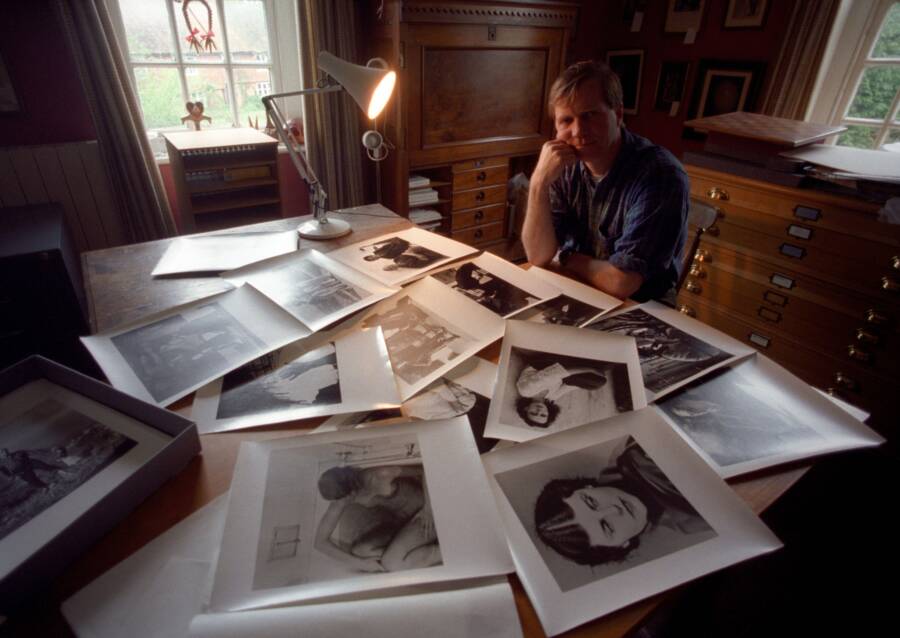
Roger Bamber / Alamy Stock PhotoAntony Penrose with a collection of his mother’s photos that he and his wife discovered in the family’s attic. 1998.
To Antony, it was an incredible moment on more levels than one. Not only did it reveal a new side of his mother, but it also made it possible for him to examine his relationship with her in a new light.
“Finding the photos forced me to completely re-evaluate my mother,” Antony explained to All That’s Interesting. “In the first 25 years of my life she was an alcoholic and that made life around her extremely difficult so I had a very conflicted relationship with her that got worse as time went on until it was almost open warfare. What none of us understood was she was suffering dreadfully from PTSD, which was little understood until the early 1980s.”
Antony made it his mission to share his mother’s work with the world, and thanks to him, that material has now reached a wider audience.
“We created the Lee Miller Archive and that gave me the information to write her biography, The Lives of Lee Miller,” he told All That’s Interesting. “It was a cathartic process… The woman I had known as a drunk and a depressive became a person of incredible courage, talent, and with great determination.”
Today, the Lee Miller Archive offers an impressive look at World War II through Miller’s bold photographic eye. But Antony Penrose also hopes that it tells a story about his mother and her courage, compassion, and talent.
“I am hoping people will understand how she tempered her ambition and courage with compassion and genuine care for others, especially those who were vulnerable or less fortunate than she,” Antony Penrose remarked to All That’s Interesting. “What gives me great satisfaction is the way she is so inspirational to young people in particular.”
He added: “I have many stories from women who say Lee inspired them to make career changes, dump bad relationships, go off and follow their dreams, and in many cases, become photographers. Some conflict photographers cite her as their inspiration and guiding light. I find this very rewarding and hope it will be that many others are inspired by her.”
After reading about Lee Miller, look through these stunning Matthew Brady photos taken during the Civil War. Or, peruse this gallery of World War I autochromes commissioned by Albert Kahn.





